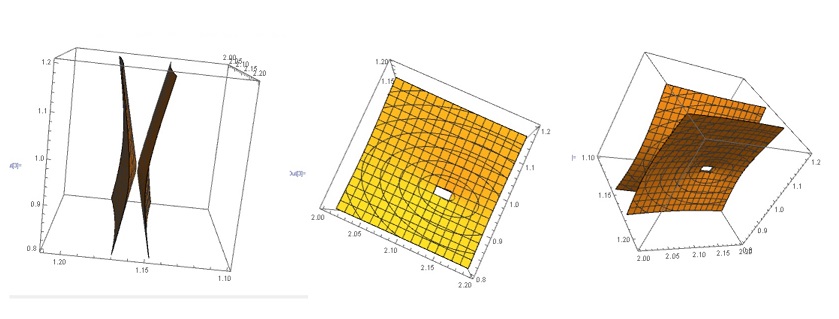I have this 3-variable function
f := 16 ((-1 + (9 x^2)/4) Cos[z] Cosh[(π x)/3] +
3 x Sin[z] Sinh[(π x)/3]) Sinh[π x] +
8 (-1 + (9 x^2)/4) Sinh[x y] + (-3 + (9 x^2)/4)^2 Sinh[
x (2 π + y)] - (1 + (9 x^2)/
4)^2 (2 Cosh[(2 π x)/3] Sinh[x y] + Sinh[2 π x - x y]);
I use ContourPlot3D as
ContourPlot3D[f == 0, {x, 1.1, 1.21}, {y, 2, 2.2}, {z, 0.8, 1.2}]
and I get the result (I have attached different orientations of the plot)
Here, I see an empty part in between. I am sure that these two sheets either touch each other or avoid each other. So, this empty part (if it is really empty!) should not be true. How can I get a more accurate result (plot) to make sure that they are continuous (meet each other) or not?


